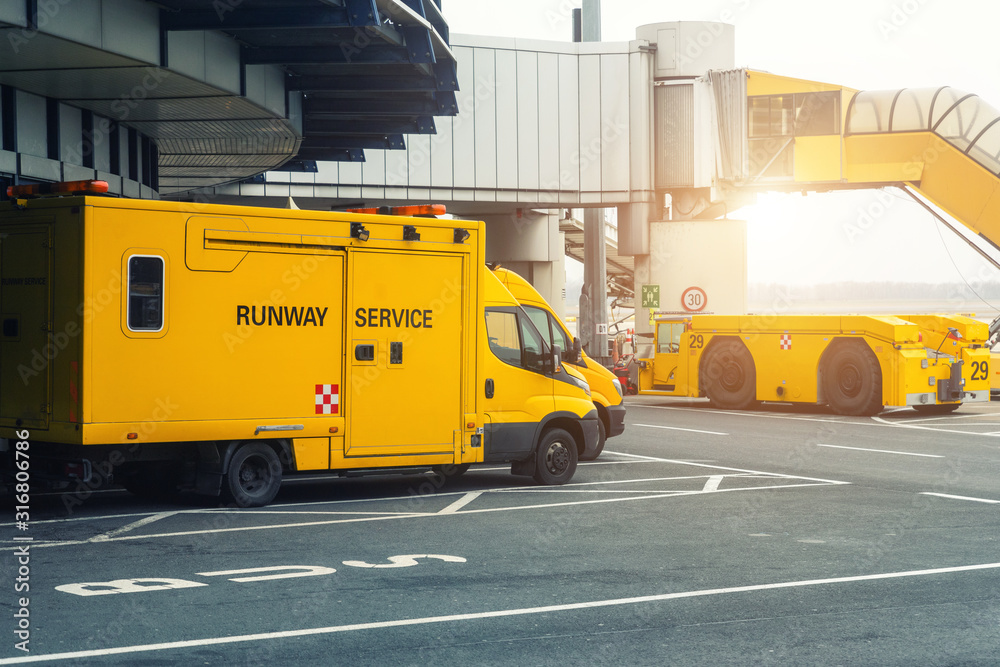
Tarmac Equipment: A Guide to What You Can See for Ground Support
Air travel is a complicated process involving much more than just the airplanes and the pilots who fly them. Ground assistance is extremely important in ensuring planes take off and land on schedule and without incident. The use of specialist machinery developed solely to carry out chores on the tarmac is required for these operations. This tutorial sheds light on the many pieces of equipment and instruments, many of which go unnoticed, that work together to enable smooth flight operations.
Table of Contents
TogglePushback Tractors: Initiating the Journey
Pushback tractors, often the unsung heroes of the airport tarmac, play an indispensable role in ensuring the smooth movement of aircraft. These powerful vehicles are meticulously designed to transport aircraft to and from their designated parking stands. Without the intervention of these tractors, many aircraft, especially the behemoths of the aviation world, would grapple with the intricacies of maneuvering within the tight spaces and busy confines of the airport apron. Pushback tractors come outfitted with specialized attachments to ensure a secure connection with the aircraft. These are tailored to grip the aircraft’s nose wheel firmly, facilitating the tractor’s ability to either tow the aircraft to its desired location or push it back from its boarding gate with utmost precision and safety.
Aircraft Refueling Vehicles: Powering the Flight
Fueling is an indispensable and sensitive operation in aviation, demanding the highest precision and safety standards. The vehicles tasked with this pivotal role, commonly known as “fuel bowsers” or “tankers,” are designed to cater to these rigorous standards. They are equipped with long, flexible hoses that facilitate the seamless transfer of jet fuel from the vehicle’s storage reservoir into the aircraft’s dedicated fuel tanks. Beyond just efficient fuel transfer, these vehicles are integrated with unique safety features. These mechanisms proactively mitigate potential risks like fuel spills, overfills, or even static electricity discharges, ensuring a safe and efficient refueling process.
Ground Power Units (GPUs): Energy on Standby
Ground Power Units (GPUs) are integral to the myriad of tools and equipment found bustling around an aircraft while on the tarmac. These specialized units supply power to parked aircraft, ensuring their systems remain functional while the main engines are turned off. By providing the necessary electricity, GPUs save fuel, reduce engine wear, and contribute to a decrease in airport emissions. They are just one component within the vast array of ground support equipment dedicated to maintaining flight schedules, safety, and the overall efficiency of airport operations. Understanding their role offers a glimpse into the intricate processes that keep our flights running smoothly.
Conveyor Belt Loaders: Facilitating Baggage Transfer
The efficient handling of passenger baggage and cargo is a linchpin in ensuring the punctuality of flight schedules. To this end, conveyor belt loaders have become invaluable assets on the airport tarmac. These mobile conveyors are specifically engineered to bridge the gap between the terminal and the aircraft, facilitating the rapid baggage transfer from one point to the aircraft’s cargo hold and vice versa when unloading. One of their standout features is their adjustable height mechanism. This adaptability allows these loaders to align seamlessly with various aircraft models, ensuring a smooth and efficient baggage-handling process across different planes.
Deicing Vehicles: Combatting the Cold
In regions graced by the chill of colder climates, aircraft often face the formidable challenge of ice accumulation on their wings and fuselage. This seemingly thin layer of frost can drastically affect the aerodynamic properties of the plane, compromising its ability to generate lift and potentially jeopardizing the flight’s safety. Recognizing this peril, airports deploy deicing vehicles as a frontline defense against these icy adversaries. These specialized vehicles shower the aircraft with tailored deicing and anti-icing fluids, removing existing ice and creating a protective layer to ward off further build-up. Through this process, they play a pivotal role in ensuring that aircraft can achieve a safe and unencumbered takeoff, even in the heart of winter.
Aircraft Maintenance Platforms: Keeping Them Airworthy
Any aircraft’s continuous safety and optimal performance hinges on its regular maintenance checks and thorough inspections. Maintenance platforms, often resembling adjustable staircases or scaffoldings, are employed to facilitate this intricate and detail-oriented task. These platforms are expertly designed to provide engineers and technicians with safe, secure, and elevated access to the aircraft’s many facets, ranging from the roaring engines to the more subtle nuances of overhead compartments. Their adjustable nature ensures compatibility with different aircraft sizes and models, allowing precision work across the diverse fleet. These platforms play a vital role in ensuring that every nook and cranny of an aircraft is accessible, inspected, and maintained to the highest safety standards.
Conclusion
While the marvel of flight captures many imaginations, the intricate ballet on the tarmac is equally impressive. Ground support gear is the unsung hero of the aviation industry, ensuring every plane is fueled, maintained, loaded, and ready for its journey. Recognizing the significance of these machines and the teams that operate them enhances the appreciation for the vast network that keeps the world connected by air.


